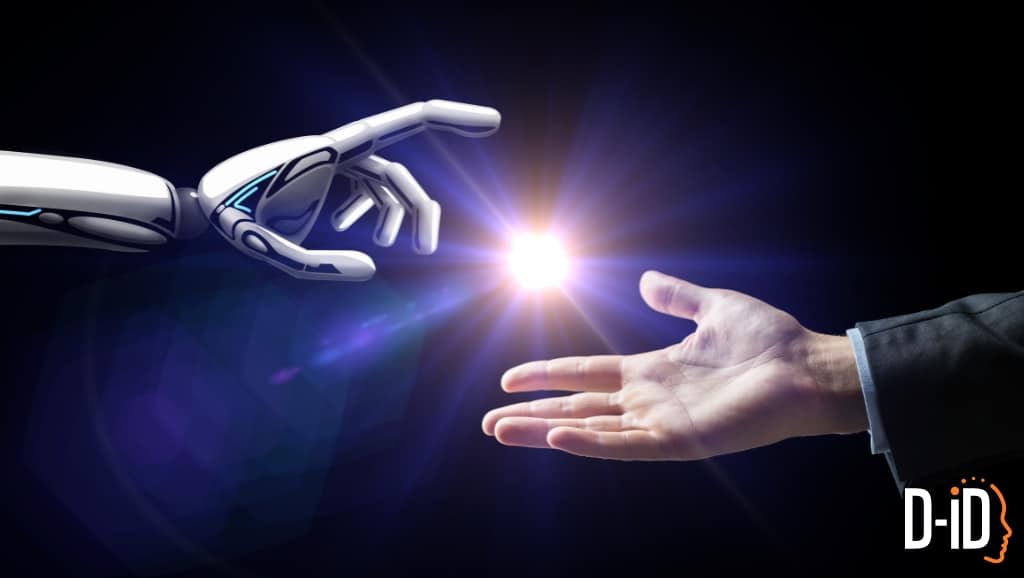How to Use an AI Character Generator to Humanize Brand Content

Key Takeaways
- AI character generators create lifelike digital personas that enhance brand storytelling and audience connection.
- Humanized AI content increases trust, emotional resonance, and engagement across marketing channels.
- Use cases include video spokespeople, social avatars, onboarding guides, and multilingual brand ambassadors.
- Brands can scale personalized, consistent communication by integrating character generators with prompts, scripts, and automation tools.
What is an AI Character Generator?
An AI character generator is a tool that creates lifelike digital personas using artificial intelligence. These characters can take on visual form, such as avatars or digital humans, and are capable of expressing emotions, speaking in natural language, and embodying specific brand traits. The technology behind these generators combines computer vision, natural language processing, and generative modeling to produce dynamic, interactive characters that are more than just visual placeholders.
AI character generators have evolved far beyond their early iterations. Today, they are used in various forms of brand content, including explainer videos, customer support agents, social media campaigns, and even virtual influencers. These AI-powered personas can be customized in appearance, voice, language, and tone, helping brands deliver content that resonates with their target audiences at scale.
Unlike static stock photos or generic avatars, AI-generated characters feel real. They move, talk, respond, and adapt to the environment they’re placed in. Whether you need a professional spokesperson for a B2B pitch or a friendly face to guide new users through your app, these characters allow you to bring brand storytelling to life in compelling, accessible ways.
Why Humanizing AI Content Matters for Brand Identity
In a world saturated with content, attention is currency. And the content that captures attention most effectively is the kind that feels authentic, relatable, and human. This is especially important when your content is generated by AI.
AI-generated content, if left unpolished, can feel mechanical or generic. That’s where the process of humanizing AI content becomes critical. When content sounds natural, expresses empathy, and reflects the brand’s personality, it builds emotional connection and trust, the cornerstones of effective marketing.
Why it matters:
- Trust and relatability: Audiences respond better to messaging that feels like it was created for them, not by a machine. When users feel like the brand understands their needs and communicates in a voice that mirrors their own, loyalty grows.
- Consistency at scale: Humanized AI characters allow you to maintain a cohesive brand voice across dozens or hundreds of campaigns, especially when multiple teams or regions are involved. It’s a way to ensure messaging stays aligned no matter who creates it.
- Diverse audience engagement: With multilingual support and localized content, AI characters can adapt to different markets while preserving the core brand identity. This enables brands to reach a global audience without compromising on emotional nuance.
- Emotional storytelling: Digital humans help convey tone, mood, and sentiment, key elements in persuasive storytelling. Seeing a character smile, pause thoughtfully, or express concern can have a profound impact on how viewers respond to the content.
What Is Brand Content and Why Is It Important?
Brand content refers to the creative materials and assets that communicate your brand’s identity, values, and offerings to the world. Unlike product-focused ads, brand content is about storytelling. It builds a connection rather than just conversion. It includes blog posts, videos, social media posts, tutorials, newsletters, and more, anything that reflects the essence of your company and speaks to your audience.
Strong brand content:
- Shapes perception: It helps people understand who you are and what you stand for.
- Builds trust: Authentic and valuable content fosters loyalty over time.
- Supports all stages of the funnel: Whether you’re attracting new leads or nurturing existing customers, brand content has a role.
- Increases visibility: Quality content improves SEO and helps your brand stand out in an increasingly noisy market.
Today’s audiences expect more than product specs and sales pitches. They want personality. That’s why brand content infused with human emotion, delivered by a face they can connect with, can outperform sterile campaigns by a wide margin.
Practical Ways to Use AI Character Generators in Marketing Campaigns
Let’s look at how marketers are using AI character generators to push creative boundaries and scale brand engagement:
1. Personalized Video Outreach
Use AI avatars to deliver tailored video messages to leads, customers, or employees. Personalizing the character’s name, language, or facial expressions makes each message feel crafted just for the viewer. These videos can be used in outbound campaigns, onboarding journeys, or post-purchase thank-yous to build stronger customer relationships.
2. Branded Tutorials and Product Walkthroughs
Replace static how-to videos with dynamic avatars who guide users through features and onboarding flows. A digital guide with a warm smile and clear instructions helps viewers feel like they’re being personally supported, which increases retention and completion rates.
3. Interactive Landing Pages
AI characters can greet visitors on your website, answer questions in real time, or walk them through value propositions using embedded scripts and voiceovers. This approach turns a passive landing page into a conversation. Adding a humanlike guide helps keep users engaged longer and improves conversions.
4. Global Marketing Campaigns
With support for dozens of languages, AI avatars can deliver localized content with synchronized lip movements and cultural nuance. Instead of subtitling or dubbing, marketers can create native-feeling content for each target region, without reshooting a thing.
5. Influencer-Style Campaigns
Brands are increasingly developing digital brand ambassadors who appear in ads, livestreams, and short-form videos. These AI influencers can be scripted, scalable, and always on-brand. You can launch an entire influencer campaign with zero scheduling conflicts and complete creative control – all using a customized digital twin.
Tips to Make Your AI-Generated Content Sound More Human
Whether you’re writing scripts for video avatars or generating blog content using GPT, here’s how to bridge the gap between automation and authenticity:
1. Refine Your Prompts
Be specific. Include desired tone, target audience, and context in your prompts. Instead of “write a welcome script,” try: “Write a warm and casual 30-second welcome message for a wellness app targeting Gen Z women.” Being intentional at the prompt level ensures your output is closer to the final form.
2. Add Emotional Context
Words alone can feel flat. Use language that reflects empathy, excitement, or concern depending on the topic. Add pauses, questions, and colloquial phrases that sound like natural speech. For video avatars, this might also mean scripting expressive reactions like nods or smiles.
3. Customize the Voice
Align your AI avatar’s voice with your brand’s tone. Whether it’s confident and authoritative or friendly and quirky, maintain consistency across your content. Don’t just rely on default settings; test and iterate to find what resonates.
4. Layer in Personality
Give your character a backstory, preferences, or inside jokes that reflect your company culture. These small details make a big difference in engagement. Think about how each avatar might speak, gesture, or respond differently depending on their “personality.”
5. Test With Real People
Use small audience tests to gather feedback on the character’s tone and delivery. Tweak accordingly to eliminate awkward phrasing or robotic cadences. AI can be powerful, but it’s human feedback that keeps it grounded.
How D-ID Helps Bring AI Characters to Life
D-ID provides a suite of tools that empower brands to create intelligent, humanlike AI characters that drive results.
Visual Agents
Visual Agents are D-ID’s most advanced AI avatars. They combine lifelike video rendering with real-time conversational AI. These agents can hold contextual conversations, answer questions, deliver personalized content, and even act as guides or assistants across your digital channels. With Visual Agents, your brand can provide interactive customer service, onboarding support, or product education, all through an expressive, responsive digital face.
Visual Agents are multilingual, customizable, and easy to embed on websites or apps. They’re powered by cutting-edge LLMs and retrieval-augmented generation, meaning they can tap into your knowledge base and keep up with user interactions naturally.
Express Avatars
These are pre-rendered, ultra-realistic digital twins that you can animate with your own scripts or audio. Express Avatars are ideal for rapid deployment across platforms, from onboarding videos to marketing messages. They’re especially useful for one-way communication, like personalized videos or explainer content.
Creative Reality Studio
D-ID’s Creative Reality Studio lets you create, script, and generate custom avatars directly from a photograph. No special effects team or production studio required. You simply upload an image, enter your text, and generate a video.
Why choose D-ID?
- Hyper-realistic visuals that elevate brand credibility
- Conversational interfaces for truly interactive experiences
- Multilingual voice support for global scalability
- Flexible branding options to keep your visuals on point
- Simple, no-code workflows for marketers and creatives
- Enterprise-ready APIs for advanced deployment and analytics
Bringing It All Together
Human connection drives results. Whether you’re in e-commerce, education, healthcare, or entertainment, audiences crave content that feels like it was created for them, not just at them. AI character generators make it possible to deliver that feeling at scale.
By blending GPT-based language models with lifelike digital humans, you can make your content feel more personal, more relevant, and more impactful. But the tools only take you halfway. The real magic happens when you use them with care, creativity, and empathy.
Let’s Put a Face to Your Brand
If you’re looking to elevate your content and humanize LLM output with video and emotion, an AI character generator is your next creative partner. From marketing campaigns to support workflows to personalized outreach, lifelike avatars can help you tell your story in a way no static image ever could.
Ready to give it a try?
- Explore the Creative Reality Studio
- Get started with Visual AI Agents
- Or contact our team to see how we can bring your brand story to life
Let your content speak like a human. Because even in a digital-first world, people connect with people.
FAQs
-
AI character generators help marketers create digital avatars that can deliver personalized messages, explain products, engage customers, or act as brand spokespeople in video and interactive content.
-
Focus on tone, emotion, and context. Customize your prompts, use informal phrasing, add emotional cues, and test your scripts with real users to ensure they sound natural.
-
Yes. Brands that use consistent, humanlike avatars in social posts, DMs, and reels often see better engagement thanks to the sense of familiarity and authenticity they provide.
-
It can be, provided there’s transparency. Brands should disclose when a character is AI-generated, avoid impersonation, and use the technology to support, not deceive, audiences.
-
Tools like D-ID, ElevenLabs, and Writer.com let you script and voice AI characters with natural expressions and tone. Pair these with GPT prompts that include emotional cues, specific audience references, and narrative framing.
Was this post useful?
Thank you for your feedback!
 Libi Michelson
Libi Michelson